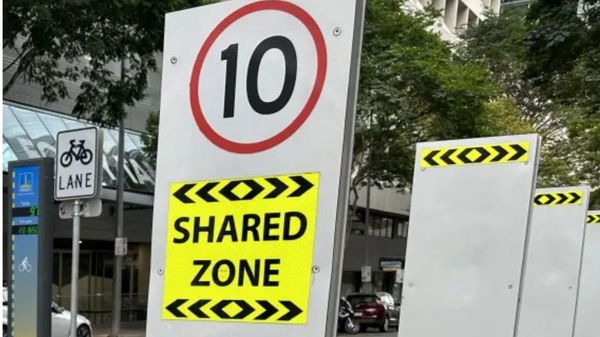

A curious case unfolded on a quiet school holiday Friday morning, aptly coinciding with World Car-Free Day. Apparently, a seasoned cyclist named Bob found himself thrust into an unexpected showdown on Brisbane’s Kurilpa Bridge. The outcome was even more dreadful, as Bob’s wallet witnessed a massive deduction for the regulatory fine payment. The surprising legal consequences of the incident have rapidly ignited a fiery debate.
Watch What’s Trending Now!
With similar speculations at the well-argued speed limit, Bob was pedaling across Kurilpa Bridge when, out of the blue, he was slapped with a hefty fine. Soon, he faced charges for exceeding the bridge’s painstakingly slow 10 km/h limit, as the cycling man was clocking in at around 26 km/h. But the twist came as a hefty payable amount, which matches the category of what a motorist would face for speeding at 56 km/h in a school zone.
ADVERTISEMENT
Article continues below this ad
Cycling venture earns unexpected monetary blows
The matching fine for a cyclist’s trip in comparison to a speeding SUV has immediately sent shockwaves through the local community. Bob, flabbergasted and flustered, questioned the logic behind his notable penalty, which turned out to be around $464. “If I was riding at 10km/h, I would be overtaken by joggers,” he protested after the sudden prosecution of his alleged crimes. Luckily, he was not alone in this sentiment.
Many cyclists on the Kurilpa Bridge have reported experiencing the surreal sensation of being outpaced by pedestrians. Subsequently, the Queensland Transport and Main Roads’ guidelines acknowledged that bicycles can become unstable at speeds below 11 km/h. Yet, they also advocated for cyclists to travel at speeds between 15-25 km/h on well-designed paths, with no significant risk to pedestrians. With these unjustified parameters, many cyclists question if the speed limit is excessively cautious for acceptance.
ADVERTISEMENT
Article continues below this ad
Arising debates on the dilemma
As authorities clamped down on cyclists during the ‘Spring Break’ school holiday operation, they also targeted speed, helmets, and rider behavior. Soon, questions arose about the logic behind such severe restrictions. The Kurilpa Bridge, an award-winning green project, eventually faced intense criticism for imposing fines on cyclists exceeding this comically low-speed limit. Adding to the perplexity, the speed limit signs on the Kurilpa Bridge have seemingly even played a game of roulette over the years.
The limits are seen unevenly changing their count, ranging from 10 km/h to 20 km/h and back, while the signs left cyclists scratching their heads. Meanwhile, across the river, the Goodwill Bridge keeps portraying a stark difference. With three times busier traffic than Kurilpa, it carries pedestrians, cyclists, and e-scooters, but still boasts a speed limit of 20 km/h.
ADVERTISEMENT
Article continues below this ad
In this unusual battle of cyclists versus speed limits, advocacy groups like Space 4 Cycling and Queensland Walks were recorded asking for betterment. They expressed an urge for sensible approaches to shared paths, prohibiting all forms of ‘fast and furious’ rides. As the dust settles on the cyclist’s frustrating penalties, the question of Brisbane finding the right balance between safety and practicality still remains unsolved.
Watch This Story: The 5 most extensive cycling routes in England
ADVERTISEMENT
ADVERTISEMENT
ADVERTISEMENT
ADVERTISEMENT


